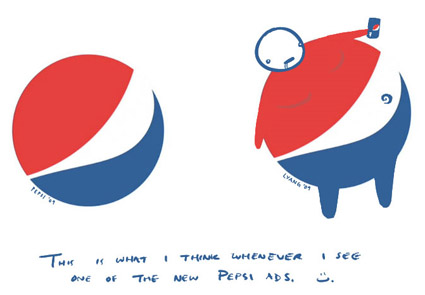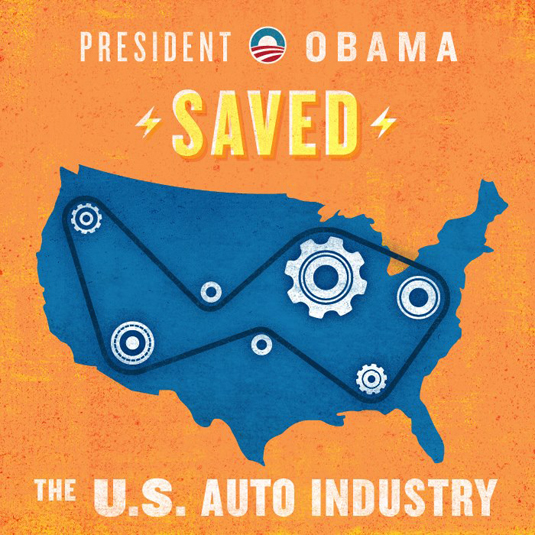
By now I’m sure you’re aware that there’s this thing called an “election” going on today, but instead of comparing the candidates on important issues such as the economy, foreign affairs and social policy, I thought I’d talk about what really matters: each campaign’s respective graphic design.
From logos, to websites, to social networks, each campaign has literally spent millions (possibly billions) of dollars in hopes of securing your vote. So how did each campaign do? Until we know the actual results, here’s how they stack up from a purely visual standpoint:
LOGO
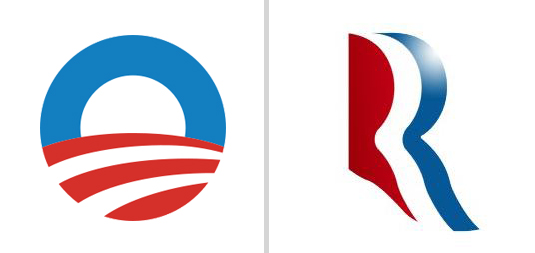
Infinitely adaptable, clever and just plain nice to look at, Obama’s logo has been a game changer from the start. Thankfully, this time around, the campaign had the good sense to leave the ‘O’ mark alone — if it ain’t broke.
Romney’s mark on the other hand is a bit of a yawn. That is until you realize that it also very closely resembles the Aquafresh toothpaste squiggle. I’m all for dental hygiene, but even that connection doesn’t make sense for Romney — if we’re comparing teeth to teeth, the Obama/Biden ticket is clearly the leader when it comes to their pearly whites.
LOGO INCORPORATION/TYPOGRAPHY
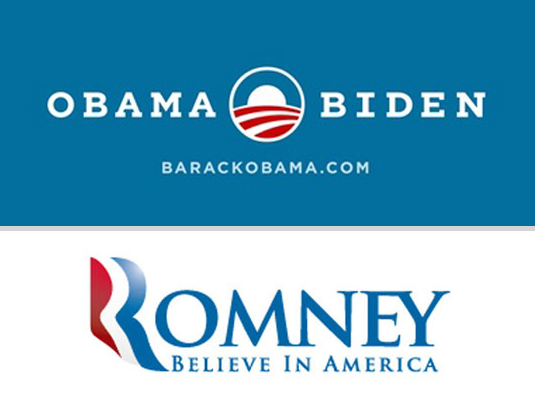
With a custom, slab-serif version of the typeface Gotham updating his look for 2012, the Obama campaign really understands beautiful typography. They could have very easily fallen into the trap of replacing the ‘O’ in Obama with his circular mark, but they are smarter than that. Yes, his yard signs are a bit hard to read from a distance, but the teeny-tiny-type-loving designer in me applauds the effort to keep it classy.
By contrast, the Romney campaign apparently had no qualms about replacing the ‘R’ in Romney with his toothpaste squigg, which creates its own readability issue (Omney for President!). The supporting, serif typeface isn’t terrible, but it’s not exactly a thing of beauty. The large ‘i’ in ‘IN’ is puzzling, and the combination of the e and y serifs is a bit sloppy. The ‘m’ and the ‘n’ are also awkwardly joined, but the ‘n’ and the ‘e’ are not — consistency is key, and is something the Romney campaign doesn’t seem to care much about.
WEBSITE

While both websites get my kudos for being well-designed, especially as far as governmental/political sites go, BarackObama.com is simpler, more consistent and feels more current than MittRomney.com. The Obama campaign keeps things easy with their main navigation broken into three categories. Romney has four up top, and then an additional four below.
The “Get the Facts, Get the Latest, Get Involved” language of Obama’s site is clear and direct and a lot more motivating than “Learn About Mitt.” It should also be said that the Romney campaign should hire a new photographer — almost every photograph they use in their materials is average at best, especially when compared with Obama’s striking (and well-edited) imagery.
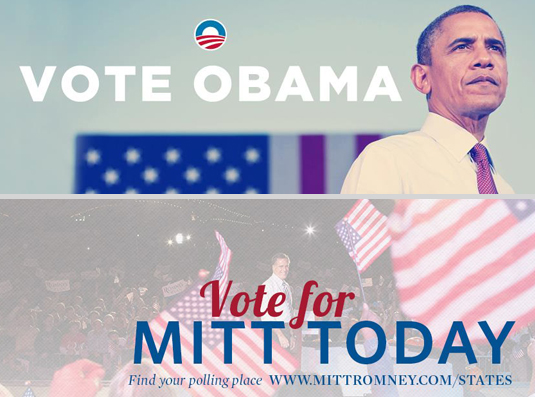
Social Media has become an important and integral part of each campaign, with frequent Facebook updates on both sides. A quick visit to each candidates official page reveals an instant difference in style. While the messages (VOTE!) and elements (photo of candidate, American flag, text) are basically the same, the designs are radically different.
Once again, the Obama campaign presents a simple, clean and elegant design. They use two words to say essentially the same thing that the Romney campaign says in eight — plus a url. Their image of Obama is clearly a professional, quality photograph, while the rally photo of Romney (is that even Romney? Why isn’t the focus more on him, and less on the billowing American flags?) is as ordinary as can be.
The Obama typography is bold and consistent with their branding. I get what the Romney campaign is trying to do with the script/sans serif combination, but they’re not quite there. They also throw in an italic and serif, for a total of four different type styles, none of which come close to being as pleasing as Obama’s one.
VIRAL GRAPHICS
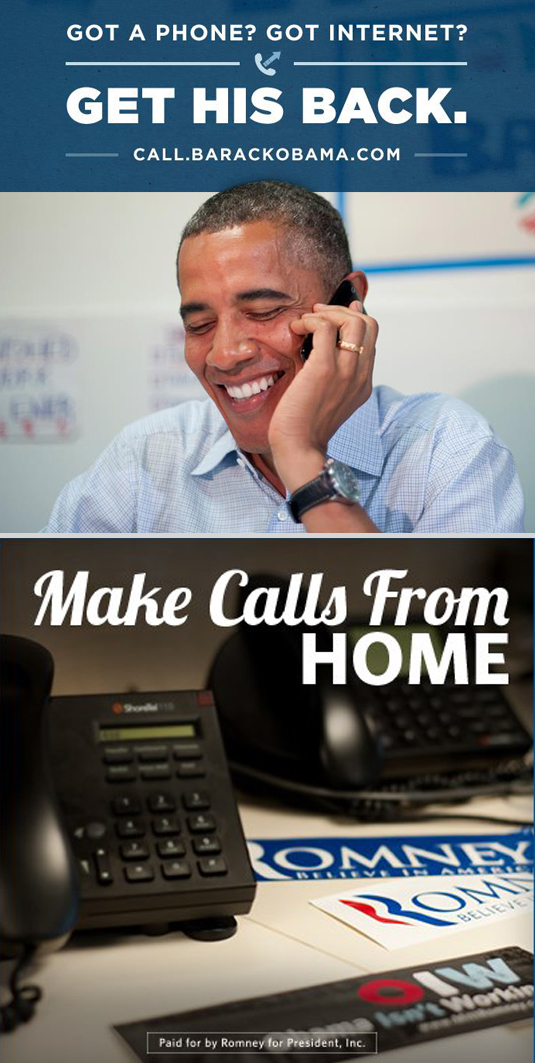
Each campaign has also tried to create individual, easily digestible, post-able graphics for Facebook, Twitter, Tumblr and Instagram. Once again consistency is key in the Obama campaign, and I’ve found myself envying their beautiful creations on numerous occasions. They’re informative, to the point, and just plain nice to look at.

By contrast, the Romney graphics are a bit all-over the place, in terms of style and general design. The photos are ho-hum (dark, poor quality, outdated — how many of you not only have a land line at home, but two??), the typography is sloppy (or hard to read) and they’re generally just… ugly.
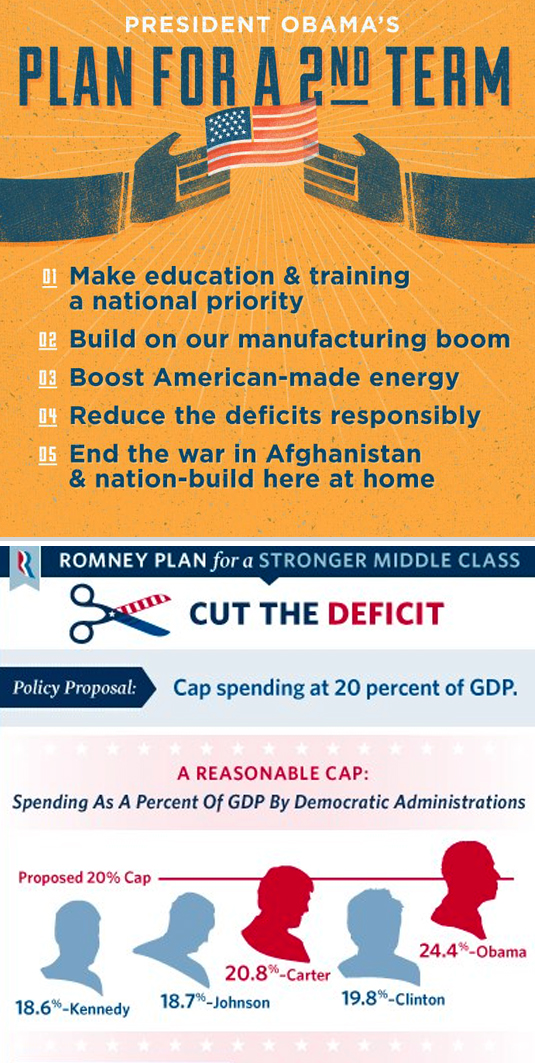
Nowhere is the contrast between the two design styles more evident than when you compare these two graphics — both are intended to deliver a message about the candidate’s platform. The Obama campaign demonstrates a clear understanding and mastery of color usage, hierarchy, typography and readability. Which of these would you rather hang on your wall? Can you even stand to look at the Romney plan long enough to read it? Strange, unrecognizable silhouettes, gradients, stars, banners, speech bubbles, arrows, so many stripes — even those scissors are patriotic.
I think that no matter how you feel about Obama the candidate, there is no doubt that his campaign not only churned out some wonderful designs, but managed to maintain a quality and consistency level to which all future campaigns should aspire. Now go vote, if you haven’t already done so, and may the best man design win!
I’m Alexandra Charitan, and I approve this message.
If you’ve ever changed the handles on your cabinets, or moved a wall clock, you know that we are creatures of habit. We gravitate towards the right (unless you’re that one, slow a-hole blocking rush-hour stair traffic) and buy our beverages based solely on the color of the can.
We’d like to think that we’re incredibly self-aware, able to make informed choices and possess open minds, but if the recent Coca Cola s-can-dal has taught us anything, it’s that we’re anything but. Basically, as an attempt to call attention to a partnership with the World Wildlife Fund, the powers-that-be at Coke released a special holiday version of their classic red can — something they do every year — but this one was, wait for it … white. GASP!
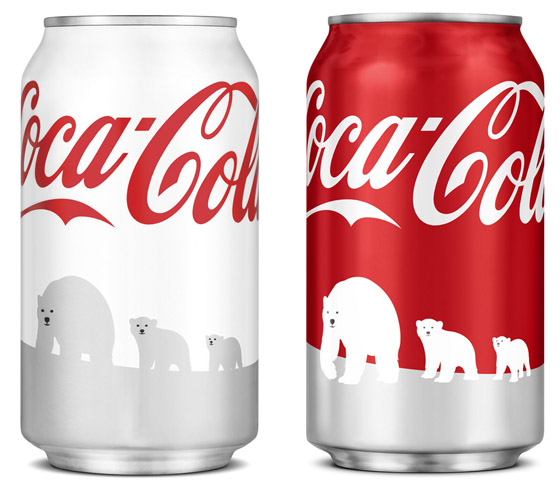
Mayhem ensued, with diabetics unknowingly guzzling the classic (read: sugar-filled) formula — duped as they were by the white can. “It was too similar to the Diet version!” they exclaimed. “It tasted differently“, others insisted. Never mind that the can clearly shows the “Coca-Cola” logo — much different, aesthetically from the Diet Coke branding — and that the iconic script occupies nearly a third of the can. Also, ignore the fact that the outside packaging remained red. America had had enough and demanded that the hoighty-toighty design-conscious snobs stop messing around with their beloved can.
So, they did. Coke is pulling their “bastardized” cans from shelves and replacing them with different, more consumer-friendly (red) designs — a plan they claim was always in the works (how convenient).
Aside from highlighting the incredibly finicky nature of the American consumer, this recent s-can-dal only reinforces what most designers already know: change is a difficult sell. No matter how much of an improvement, or how much more aesthetically pleasing a design may be, re-branding a product (or company, or person) can be an enormously difficult and touchy undertaking.
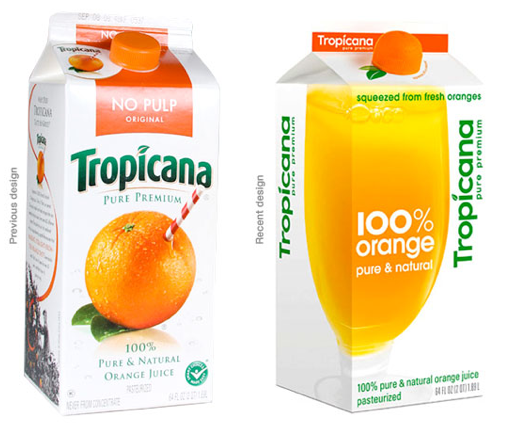 Aunt Mae’s corner cupcake shop is one thing. Huge, well-loved and well-known brands face the ire and criticism of the whole world, or at least it can seem like it (especially with the advent of that every-man’s soapbox, Twitter). Just ask the marketing departments at Tropicana or the Gap — both companies rolled out “drastic” (and I’m sure, very expensive) redesigns of their beloved brands this year, only to say out with the new, (back) in with the old, as a response to the outcries each respective design received.
Aunt Mae’s corner cupcake shop is one thing. Huge, well-loved and well-known brands face the ire and criticism of the whole world, or at least it can seem like it (especially with the advent of that every-man’s soapbox, Twitter). Just ask the marketing departments at Tropicana or the Gap — both companies rolled out “drastic” (and I’m sure, very expensive) redesigns of their beloved brands this year, only to say out with the new, (back) in with the old, as a response to the outcries each respective design received.
People don’t like change, or at least most people don’t — whether they’re aware of it or not. Just because something is new, however, does not mean it is inherently evil — although I could argue that there have been plenty of re-brands that should have been scrapped, or at least immediately re-worked (I’m looking at you, Pepsi).
As designers, we generally have pretty amazing jobs. We’re not working in a coal mine, or operating on hearts — at the same time, our profession is legitimate and some times (if we’re lucky) even influential. We have to be thoughtful and respectful with our ideas, whether they be for Aunt Mae or an industry titan like Coke.
And then, we have to stand behind our choices as professionals, or be prepared to crumble and suffer the often-times, very public (and expensive) indignity of a “just kidding” (Qwikster, anyone?).
